Hvdc vs Hvac Transmission Systems- The electricity produced in a power generating source is employed over long paths to use in an electrical substation which spreads it among the users. The voltage being utilized for long-distance applications is too high. We will discuss the reason why it requires to be high voltage. Apart from that, the power used can be either in DC (Direct Current) or AC (Alternating Current) type. As a result, the energy can be transmitted employing either HVDC (High Voltage Direct Current) or HVAC (High Voltage Alternating Current).
Why Is High Voltage Necessary for Transmission?
The voltage plays an important role in decreasing the line wastes, also introduced as the transmission losses. All electrical conductors that we employ for power transmission have some amount of R or ohmic resistance. These conductors produce heat energy when current I move within them, which is practically the power or energy P being lost. Based on the ohms law,
V = IR
Also, the formula of power,
P = IV
So, by putting the value of voltage in the power equation, we have,
P = I. (IR) = {I}^{2}R
As you can see, the energy loss in the system during transmission is based on the current, not voltage. But we can employ the voltage conversion by applying particular equipment to improve or reduce the value of current. The power remains constant during the conversion of voltage and it does not vary. The current and voltage reduce and increase by a similar factor based on the power equation (P=VI). As you can see, improving the voltage minimizes the power wastes significantly in transmission applications.
So, in order to reduce the current in the transmission paths while keeping an equal amount of energy transmission, we improve the voltage.
The War of the Current (AC VS DC)
The DC transmission was first explained during the period of the war of current (AC Vs. DC, the late 1880s), but it behaved very uselessly according to the lack of instruments for its voltage modification like a transformer which can simply modify AC rates from low to high value and vice versa. Whereas there were some low amount of DC producing stations that could just support power to a few of miles radius, any further than that, the voltage reduced considerably. Therefore, they need additional production sources in a small region, which was very costly.
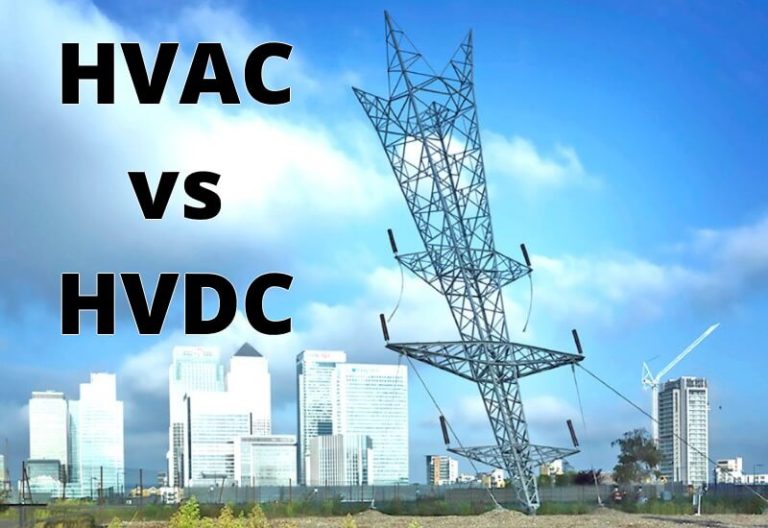
While DC provides very low wastes at high voltage applications in comparison with AC type, a Mercury Arc Valve type of Rectifiers was employed to transform high voltage AC form into DC type for long-distance applications, but the device utilized at the terminal sources was very massive, costly, and need certain maintenance occasionally. AC transmission just requires a transformer that is more effective, cheap, and stable and as a result, the AC transmission device is suitable for power transmission in long-distance applications.
In the comparison of HVDC vs HVAC Transmission systems in high voltage applications, a few features require to be taken into consideration before selecting the best form of energy transmission. In this post, we will discuss them in detail.
HVDC vs HVAC Transmission Systems
HVDC stands for High Voltage Direct Current while HVAC stands for High Voltage Alternating Current. These are typically the rate of voltage, either DC (HVDC) or AC (HVAC) that are employed for energy transmission over long distances. HVDC is preferred to be utilized for transmitting energy over long distances, commonly more than 375 miles.
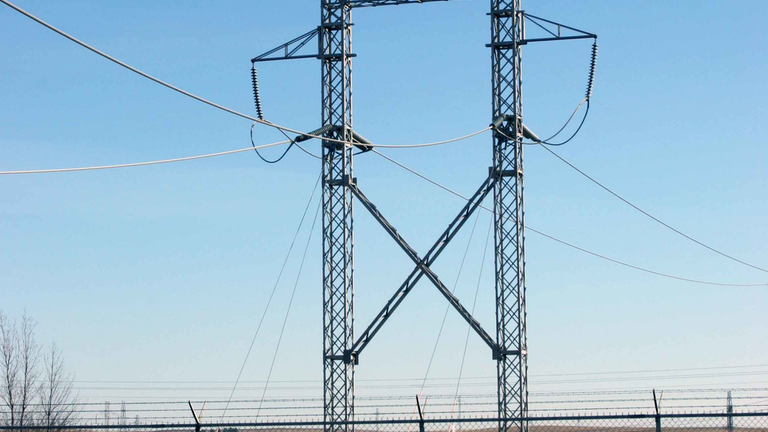
Nowadays, both formats of power transmission are employed all over the world. While these both have some advantages and disadvantages, we will explain each of them briefly in this post below based on different characteristics to discuss the HVDC vs HVAC transmission systems fundamentally. However, if you want to explore more about them, visit here.
Cost of Transmission
We understand that energy transmission over long-distance applications needs high voltages. The power is used in terminal stations that modify the voltage rates. So, the total price of transmission is based on the cost of the transmission line and the terminal source’s situation.
Terminal Station
The great number of voltages transmitted within electrical terminal sources and their operation are introduced as the voltage conversion. The system employed for voltage conversion at these sources is mainly transformers in the case of AC types that is converted between low and high Voltages. Whereas in the case of DC type, the terminal sources utilize IGBTs or thyristor-based converters for modification between low and high DC voltage.
Since the transformers are less expensive and more reliable than these solid-state converters, the AC terminal sources are cheaper than DC types. Thus, the voltage modification in AC is less costly than DC forms.
Transmission Line
The transmission line price is based on the number of conductors being employed and the price of the transmission tower.
In the aspect of conductors being employed for transmission systems, the HVDC transmission type needs just two conductors, while the HVAC transmission form needs 3 or more than 3 instruments (including the covered conductor according to the harmful effects).
Because of the massive mechanical load on AC tower systems, their operation requires to be stronger and it should be taller and wider than HVDC transmission systems. The transmission line price rises with the distance and it is far higher than the HVDC line per 60 miles of a transmission path.
Overall Cost of Transmission
The overall cost of transmission is based on the terminal price (remains fixed) and the line price (rises with distance). As a result, the overall cost of the transmission system increases with distance.
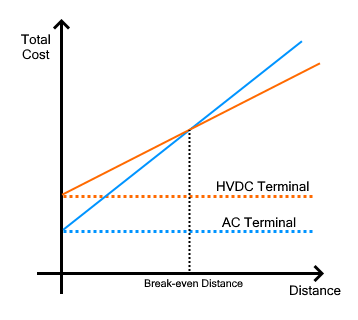
The transmission path at which the total investment cost for HVAC begins to increase is introduced as Break-even Distance. This value is evaluated around 400 – 500 miles. HVDC is a more suitable option for energy transmission in the break-even distance. Although, below this distance, HVAC is more effective than HVDC. This data can be simply understood by the previous diagram.
Flexibility
Because the HVDC transmission is employed for transmission over long-distance applications between two areas, we cannot extract power at any section in-between since it would require an expensive converter to reduce such high DC voltages. In contrast, the HVAC transmission provides flexibility using a simple and cheap device like transformers at several terminal stations to control these high voltages.
Power Losses
The HVAC power transmission format has more power wastes such as Radiation losses, Induction losses, Skin effects, Corona losses, etc.
The radiation & induction losses depend on the magnetic field variation near the HVAC conductor. A massive conductor starts operating as an antenna and radiates some power that cannot recover, while the induction wastes are the energy loss when the current is produced in close conductors based on the continuous magnetic field variation. Since DC has an identical magnetic field, the HVDC type is free from these losses.
The alternating current produced in a conductor is separated in such a method that the current density wants to compose largest at the top of the conductor and minimum at the middle; this is known as the skin effect. Because much of the cross-sectional surface is ineffective and we understand that the resistance is straightly related to the cross-sectional surface, the resistance value of the conductor rises. The DC in the system is uniformly spread because the skin effect is just based on the frequency. So, only the HVAC type experience power waste according to the skin effect in this aspect of HVDC vs HVAC transmission systems.
When the voltage rises more than a specific limit, the air close to the conductor begins the ionizing process and produces sparks that lose some power; this is introduced as corona discharge. The losses of corona discharge are also based on the frequency and because DC systems have zero frequency, the corona waste in HVAC is almost 3 times higher than that in HVDC.
The Skin Effect in Detail
The skin effect forces the conductor to keep most of the current at its top and less current at the center. It is based on the frequency and directly proportional to it. It reduces the efficiency of the conductors being employed. Thus, in order to provide a larger current, the cross-sectional section of the conductor requires to be increased.
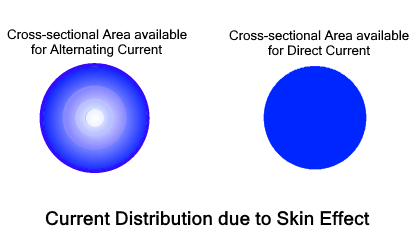
So, the HVAC requires a larger diameter device to carry an equal value of current as compared to the HVDC type employing a shorter diameter conductor.
Current & Voltage Ratings of Cable
As we discussed before, the current and voltage ratings of a cable are the optimum allowable range that it can be passed. The AC systems have a peak current and voltage that is practically 1.4 times greater than its average (the average practical energy delivered) or its DC norm. But in DC type, the average and peak values are equal.
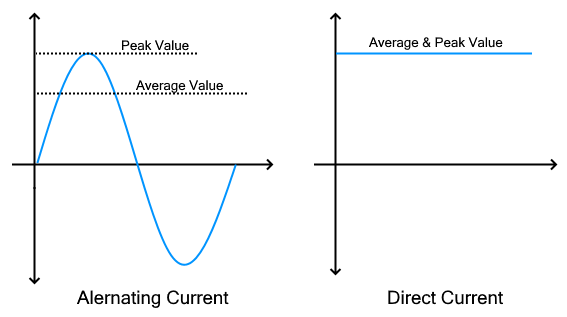
The conductor should be evaluated for the peak voltage and current for the HVAC type which loses almost 30% of its ideal capacity in comparison with the HVDC form, which uses the complete capacity of the conductor. So, a conductor with an identical size can be preferred in HVDC vs HVAC transmission systems.
Right-of-Way
The right of way is the right method to use the land to and from another section of land. In the exploration of HVDC type, it includes a narrower right-of-way since it can employ smaller kinds of towers with fewer conductors being applied, i.e., two in DC types and 3 in 3-phase AC systems. Also, the insulators used in the main towers should be rated for peak voltages in AC systems.
The right-of-way influences the prices of substances used and fabrication requirements for the different transmission systems. We can conclude that HVDC types have a narrower right-of-way than HVAC transmission systems.
Submarine Power Transmission
We use cables in order to move power offshores employing submarine power transmission. At the same time, the cables provide certain capacitance generated between two conductors that operate in parallel arrangement to transmit power over long-distance applications.
The capacitance value is just based on the variation in voltage which is continuously happening in AC types, and only during switching mode in DC systems. The cable does not provide energy due to such capacitance (at the receiving section) before being completely charged. The cable is discharged and charged continuously in alternating current (50 or 60 times per second) which forces the system to lose a huge power. In contrast, the cable is charged only once in DC type. As a result, the submarine power system employed HVDC for energy transmission.
Controllability of Power Flow
When we discuss the HVDC vs HVAC transmission systems in the case of controllability, HVDC form uses particular converters of IGBT semiconductors which can be switched off and on several times in a period and control the total system, while HVAC has not a controllable part for Power flow. While the converters used in HVDC are complex, they help in controlling the distribution of energy to the entire setup and also increase the harmonic performance. These developed electronic converters provide fast protection against line errors and fault clearance contrary to the HVAC types.
Interlink Between Asynchronous Systems & Smart Grid
The concept of a smart grid is that each producing source can provide power to a combined grid configuration. It helps in creating a high value of power employing small grids, but it is relatively complex to combine several asynchronous AC grids.
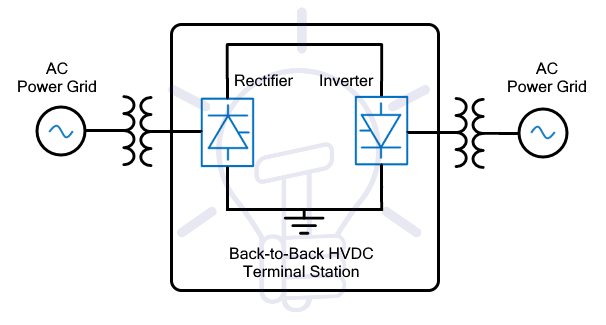
Some regions utilize 50 Hz whereas others use 60 Hz power grids based on the frequency. Also, two various power arrangements may have equal frequency but they can be out of phase. These types of devices are introduced as Asynchronous Systems. These power grids cannot be combined utilizing a common AC interlink.
In the comparison of HVDC vs HVAC transmission systems, there is no frequency or phase in HVDC. So, their interlink can simply interconnect with asynchronous systems. The interlink of HVDC types modifies the AC into DC with no frequency and can be quickly joined with any other HVDC. So, the transmission process to the receiving terminal is too fast, where inverters change it again into AC type with the requested frequency.
Circuit Breaker
The Circuit breaker is a highly important section of power transmission systems. It can cease the whole circuit operation for reaction to any fault or maintenance. The circuit breaker requires arc-extinguish abilities in the current to stop the power supply.
The direction and value of the current modify continuously in HVAC systems and the arc is typically extinguished based on the presence of several zero currents in a second that present various chances to stop the arc. Whereas in DC form, the current is fixed and there are no zero currents, so artificial zero currents should be produced employing particular circuitry to stop the arc.
As a result, in the comparison of HVDC vs HVAC transmission systems, the circuit breakers for HVAC are easy to modeling according to the “self-arc-extinguish” feature. This is while for HVDC, the circuit-breaker modeling is relatively complex and they are more costly than HVAC types.
Generating Interference
The AC systems produce a magnetic field with continuously variable values that can cause interference with the conductors in the nearby communication. Because DC types have a constant magnetic field, they do not cause such problems.
Key Differences to Contrast Hvdc vs Hvac Transmission Systems
At what follows, key differences between HVDC vs HVAC transmission systems are summarized:
- Skin effect is zero in DC systems. Also, corona wastes are especially lower in DC type. An HVDC path has noticeably lower wastes in comparison with HVAC over long-distance applications.
- HVDC transmission path would cost lower than an HVAC type.
- Based on the absence of inductance value in DC type, an HVDC path provides better voltage monitoring. Also, HVDC supplies greater controllability in comparison with HVAC.
- AC power grids are normalized for 60 Hz in some regions and 50 Hz in others. It is impractical to combine two power grids operating at different frequencies using an AC junction. An HVDC port makes this possible for power grids.
- Interference with close relative lines is lower in HVDC types than an HVAC overhead line.
- The short circuit current rate in the receiving setup is great in longer distance HVAC transmission system. An HVDC type does not chip in such circuit current of the AC form.
Conclusion
In a general comparison for HVDC vs HVAC transmission systems, HVDC transmission types have many more benefits over HVAC types, including controllability, stability, etc. HVDC systems are more cost-effective for distances greater than the break-even point. Submarine HVDC instruments can be more reliable for use in offshore wind farms as they are less expensive than undersea HVAC wires. As a result, there is an increasing tendency to choose the HVDC transmission type. However, HVAC systems are also employed because they have their particular advantages in distribution and transmission, such as they can be simply stepped down and stepped up which is an important matter in certain applications. HVDC is practically a supplement for AC forms rather than an opponent.
Buy Equipment or Ask for a Service
By using Linquip RFQ Service, you can expect to receive quotations from various suppliers across multiple industries and regions.
Click Here to Request a Quotation From Suppliers and Service Providers
Read More In Linquip
- What Is the Advantage of AC Power Transmission
- What is the Equivalent Circuit of a Transformer?
- What are the Advantages of AC over DC?
- What are the benefits of AC in Long-distance Transmission?
- What is the Difference Between MEP and HVAC? The Easy Answer
- HVAC System Components Made Easy
- Top 10 Manufacturers of HVAC Equipment in USA & World in 2022

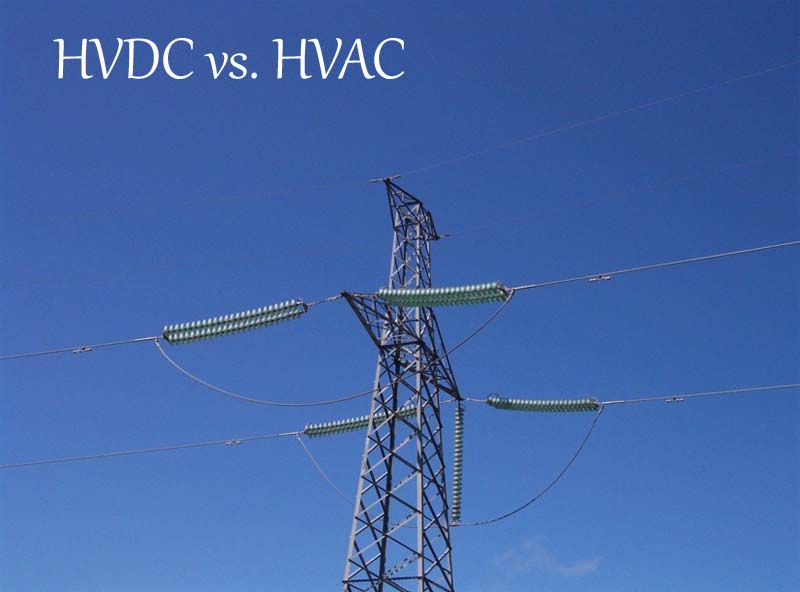


Thank you for your attention Stefan.
Very good explanation of AC & DC power transmission. I am an electronic technologist. This study of power transmission is very new to me. Thanks.
Thank you John for your consideration.
Visit our other posts please and share your comments.